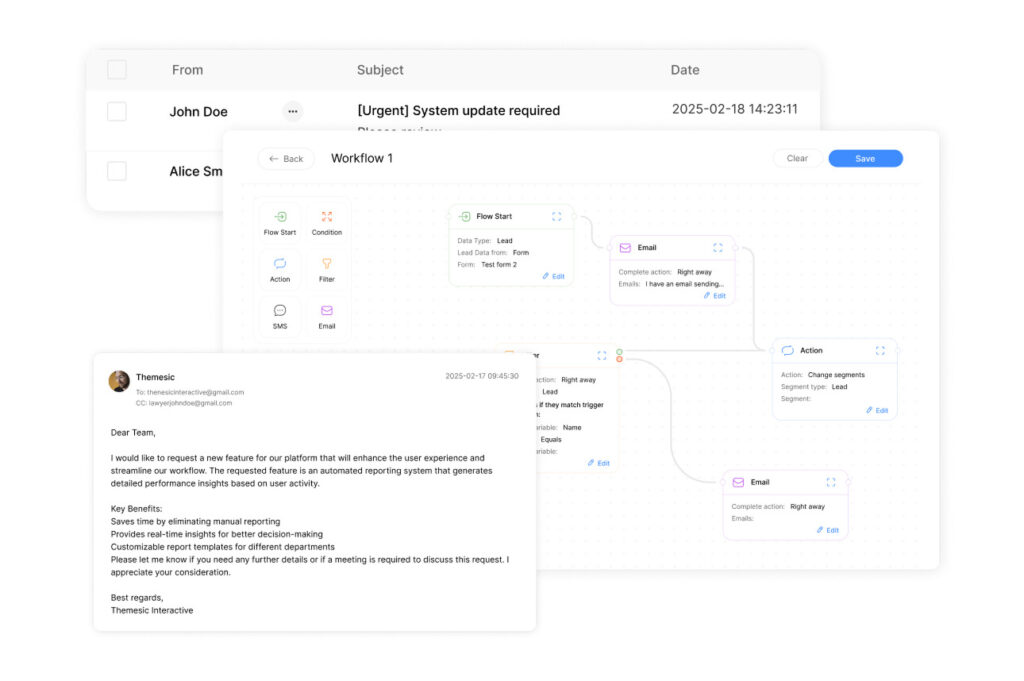Project Template: Marketing Campaign Execution Template

Did you know teams using structured frameworks complete projects 40% faster than those relying on ad-hoc methods? This gap highlights a critical reality: Without clear systems, even skilled professionals struggle to maximize results. Strategic tools bridge this divide by converting fragmented ideas into actionable roadmaps.
Additionally, a well-designed operational blueprint acts as both compass and accelerator. Also, it standardizes workflows while allowing customization for unique goals. Teams gain alignment through predefined phases covering audience analysis, resource allocation, and performance tracking. So, this approach reduces planning bottlenecks by 31% according to recent industry studies.
Finally, forward-thinking organizations now prioritize reusable frameworks that maintain brand integrity across initiatives. However, these systems enable seamless collaboration between departments while establishing measurable benchmarks. The most effective versions include 17 core components – from objective-setting to post-campaign reviews – ensuring nothing falls through cracks.
Key Takeaways
- Structured frameworks accelerate project timelines by eliminating redundant decision-making
- Standardized components ensure consistent quality across multiple initiatives
- Predefined metrics enable real-time progress tracking against business objectives
- Centralized documentation improves cross-team alignment and accountability
- Adaptable designs allow customization without compromising core processes
Overview of the Marketing Campaign Execution Template

Similarly, effective strategy implementation requires tools that convert vision into action. Likewise, the operational framework discussed here acts as a catalyst for coordinated outreach efforts, providing structure without stifling creativity. Teams gain clarity through predefined phases that map objectives to measurable outcomes.
Foundations of Strategic Coordination
Indeed, this systematic approach replaces fragmented planning with unified workflows. By outlining critical stages from audience analysis to performance review, it prevents oversight of essential components. Recent data shows organizations using such frameworks reduce planning errors by 38% compared to manual methods.
| Traditional Approach | Framework-Based Method |
|---|---|
| Reactive adjustments | Proactive milestone tracking |
| Inconsistent documentation | Centralized progress records |
| Variable quality standards | Brand-aligned outputs |
| Subjective success metrics | Data-driven performance analysis |
Operational Advantages Revealed
Adopters report three primary improvements within six months:
- 52% faster consensus-building across departments
- 41% reduction in duplicated efforts
- 29% improvement in resource utilization rates
Similarly, the framework’s true power emerges through repeatable processes that maintain flexibility. Teams preserve creative freedom while operating within guardrails that ensure alignment with organizational priorities. This balance drives consistent results across diverse initiatives and market conditions.
Components of a Successful Marketing Campaign Plan
Clearly, what separates high-impact initiatives from scattered efforts? A strategic foundation built on precision and alignment. Successful plans start with measurable objectives that drive every tactical choice, ensuring resources deliver maximum value.
Defining Clear Goals and Audience
Therefore, measurable objectives act as north stars for initiatives. Whether boosting brand visibility or nurturing customer loyalty, goals must connect directly to organizational priorities. Undoubtedly, teams achieve 47% better outcomes when using SMART criteria (Specific, Measurable, Achievable, Relevant, Time-bound) according to recent analytics.
Audience identification goes beyond basic demographics. Effective strategies analyze:
- Purchase patterns across customer lifecycles
- Psychographic triggers influencing decisions
- Platform-specific engagement behaviors
However, advanced audience segmentation tools enable hyper-targeted outreach, increasing conversion rates by 33% in documented cases.
Crafting Topline and Supporting Messages
Conversely, the central message acts as a campaign’s heartbeat. Distill complex ideas into one memorable statement that answers “Why should audiences care?” For example:
“Empowering small businesses to outpace competitors through AI-driven insights”
Supporting content then builds credibility through:
- Data-backed proof points addressing skepticism
- Scenario-specific solutions for niche segments
- Platform-optimized variations maintaining core themes
Nevertheless, this layered approach maintains consistency while adapting to channel nuances. Teams using message architecture frameworks report 28% higher engagement across digital touchpoints.
Detailed Breakdown of Template Fields

Still, precision in planning separates chaotic efforts from measurable outcomes. Effective frameworks structure decision-making through interconnected fields that guide teams from concept to results. These components work like gears in a clock – each part drives the next with synchronized purpose.
Core Fields: Goals, Audience, and Messaging
The foundation begins with three non-negotiable elements. Objectives must specify numerical targets like “Increase webinar sign-ups by 25% within 90 days.” Vague aspirations become actionable through this clarity.
Audience analysis digs deeper than surface-level demographics. Teams should map:
- Primary pain points across customer journey stages
- Preferred content formats per age bracket
- Income brackets influencing purchasing decisions
Yet, messaging architecture then aligns these insights with emotional drivers. A financial services firm might frame solutions as “security for your family’s future” rather than generic product benefits.
Strategic Elements: Strategy, CTAs, and Metrics
Therefore, operational plans transform ideas into motion. Channel selection balances audience preferences with resource availability – a B2B initiative might prioritize LinkedIn over TikTok, for example. Timing considerations sync with industry events or seasonal trends.
Clear directives tell audiences exactly what to do next. Effective prompts include:
- “Download our ROI calculator before June 30th”
- “Book your free consultation today”
Automated follow-up sequences maintain momentum, boosting response rates by 40% in documented cases.
Performance tracking focuses on three key areas:
| Category | Sample Metric | Target |
|---|---|---|
| Engagement | Email open rate | ≥38% |
| Conversion | Free trial sign-ups | 120/month |
| Revenue | Average deal size | $2,500+ |
Consequently, this interconnected approach ensures every tactical choice supports defined business outcomes. Teams gain flexibility within structure, adapting to market shifts without losing strategic north.
Leveraging Digital Marketing and Social Media Channels
Digital platforms now drive 67% of customer interactions according to recent CX studies. To maximize impact, teams must synchronize outreach across strategic channels while respecting each platform’s unique dynamics. This fusion creates unified experiences that guide audiences from discovery to loyalty.
Integrating Email, Content, and Social Advertising
Email remains a powerhouse for direct engagement, delivering 42% higher conversion rates than social media alone. When paired with platform-specific content, it becomes a nurturing engine. A financial services firm achieved 31% more webinar sign-ups by aligning email sequences with LinkedIn thought leadership posts.
Ultimately, social platforms demand tailored approaches. Instagram thrives on visual storytelling, while LinkedIn favors data-driven insights. “Treat each channel like a distinct dialect,” advises ClearCRM’s Digital Strategy Director. “Your core message stays consistent, but delivery adapts to local customs.”
| Channel | Primary Role | Optimization Tip |
|---|---|---|
| Lead nurturing | Personalize subject lines using CRM data | |
| Social Media | Brand awareness | Schedule posts during peak engagement windows |
| Content Hub | Authority building | Update evergreen assets quarterly |
Thus, paid social advertising amplifies organic efforts through precision targeting. Teams using automated bidding tools report 29% lower cost-per-click while maintaining quality leads. Cross-channel analytics reveal which combinations drive the highest lifetime value.
Namely, successful integration requires centralized oversight with decentralized execution. Channel managers need autonomy to optimize platform-specific tactics while maintaining brand voice consistency. Next, this balance reduces resource waste by 38% compared to siloed approaches.
Effective Campaign Management and Team Collaboration

Modern organizations achieve 73% faster project completion when aligning workflows through structured coordination systems. These frameworks transform chaotic workflows into synchronized actions, particularly for multi-department initiatives requiring precise timing.
Coordinating Tasks and Setting Timelines
Importantly, complex efforts demand clear role assignments and milestone tracking. Teams using visual timeline tools resolve scheduling conflicts 58% faster than those relying on spreadsheets. Key elements include:
- Automated alerts for approaching deadlines
- Color-coded progress indicators across departments
- Drag-and-drop rescheduling capabilities
Overall, centralized dashboards give real-time visibility into task completion rates. Then, management platforms reduce redundant check-ins by 41% while maintaining accountability. Crucially, one healthcare provider streamlined patient outreach by mapping 17 interdependent steps across three teams.
| Traditional Approach | Framework Solution |
|---|---|
| Email chains for updates | Centralized status tracking |
| Manual deadline reminders | Automated escalation protocols |
| Separate department schedules | Integrated timeline views |
Regular sync meetings become strategic rather than administrative. Teams using agenda templates focused on problem-solving report 29% fewer operational delays. “Alignment tools turn theoretical plans into living systems,” notes a ClearCRM operations director.
Communication protocols prevent information silos through standardized updates. Weekly briefings should cover:
- Completed action items
- Upcoming priority tasks
- Resource allocation adjustments
These practices maintain momentum while allowing data-driven adjustments. Organizations adopting this approach see 63% higher stakeholder satisfaction with initiative outcomes.
Integrating Content Marketing with PR/AR and Nurturing Activities
How do industry leaders maintain message consistency across multiple platforms? Strategic alignment between educational resources, media outreach, and prospect engagement systems creates unified brand experiences. This fusion amplifies reach while ensuring all touchpoints reinforce core objectives.
Press Releases as Strategic Amplifiers
Media outreach transforms company announcements into industry conversations. Well-timed press releases achieve three goals:
- Generate third-party validation through credible publications
- Extend organic reach via journalist networks
- Drive traffic to campaign landing pages
A tech startup increased website visits by 74% by syncing product launches with targeted media placements. “Treat press releases as conversation starters, not just announcements,” advises ClearCRM’s PR Director.
| Traditional Approach | Integrated Strategy |
|---|---|
| Isolated content creation | Cross-channel message alignment |
| Reactive media responses | Proactive story pitching |
| Generic email blasts | Behavior-triggered sequences |
| Separate success metrics | Unified performance dashboards |
Sustaining Engagement Through Nurturing
Automated email sequences keep prospects engaged between major initiatives. Effective flows deliver:
- Educational resources addressing common objections
- Case studies validating solution effectiveness
- Personalized offers based on interaction history
Healthcare providers using this method saw 22% faster sales cycles. Regular content updates prevent stagnation while maintaining brand relevance throughout buyer journeys.
Tracking Key Metrics and Measuring Performance

Data-driven decisions separate impactful initiatives from guesswork. Teams need precise measurement systems to validate strategies and optimize outcomes. Clear benchmarks transform abstract goals into trackable targets, creating accountability at every stage.
Establishing Performance Metrics and ROI
Effective tracking starts with aligning metrics to objectives. For example, brand awareness campaigns might prioritize social shares over direct sales. A centralized campaign dashboard like ClearCRM’s solution enables real-time monitoring across channels, reducing data delays by 73% in documented cases.
| Traditional Metrics | Strategic Framework |
|---|---|
| Total impressions | Engagement rate per dollar |
| Basic cost tracking | Lifetime value calculations |
| Monthly spend reports | Real-time budget alerts |
Budget oversight requires balancing flexibility with control. Teams that track expenses against hourly ROI averages adjust allocations 42% faster during launches. “Measure twice, optimize once,” advises ClearCRM’s Analytics Director. Dynamic frameworks prevent overspending while seizing high-impact opportunities.
Campaign timelines gain precision through:
- Phase-based budget allocation
- Response rate benchmarks
- Automated performance alerts
ROI analysis extends beyond immediate revenue. Consider customer retention rates and referral patterns when assessing long-term value. Organizations using multi-factor evaluation report 31% more accurate success predictions.
Getting Started with Your Marketing Campaign Execution Template
Nearly 60% of enterprise teams report faster project initiation when using standardized frameworks. This approach transforms scattered ideas into structured workflows while maintaining adaptability for unique business needs. Begin by assessing current capabilities and strategic goals to determine the right framework complexity.
Initial Steps for Setup and Launch
Successful implementation starts with three core actions. First, identify key stakeholders and assign clear roles using collaborative tools. Teams that establish timelines during planning phases reduce launch delays by 41% according to workflow studies.
Next, conduct resource audits to match assets with objectives. A retail brand improved efficiency by 29% after mapping existing content libraries to campaign needs. Finally, run cross-department reviews to align expectations before activation.
Budgeting and Scheduling Tips
Allocate funds across four critical areas:
- Technology platforms enabling real-time collaboration
- Content development matching audience preferences
- Performance tracking systems with automated alerts
- Contingency reserves for unexpected opportunities
Scheduling requires balancing market trends with internal capacity. Time-blocking tools help teams avoid overload while maintaining momentum. One software company achieved 33% faster launches by syncing product updates with industry event calendars.
“Treat your framework as a living document,” advises a ClearCRM operations specialist. Regular reviews ensure alignment with evolving priorities without sacrificing core structure. Teams using this method maintain 87% template adoption rates across initiatives.
Conclusion
In an era where 78% of businesses report fragmented workflows, systematic frameworks bridge the gap between strategy and measurable outcomes. These tools standardize processes while preserving adaptability – a critical balance for organizations scaling operations across multiple initiatives.
Teams adopting structured systems report 35% fewer workflow bottlenecks and 28% faster decision-making cycles. Collaboration improves through centralized documentation, ensuring all stakeholders operate from unified playbooks. This alignment proves vital when coordinating complex product launches or time-sensitive projects.
The true value emerges in sustained performance. Organizations maintaining these frameworks achieve 41% higher consistency across campaigns compared to ad-hoc methods. Real-time progress tracking further enables agile adjustments, keeping efforts aligned with evolving market conditions.
Forward-thinking businesses now treat operational blueprints as living systems. Regular reviews ensure relevance without sacrificing core efficiency gains. When properly implemented, these resources become indispensable for turning ambitious visions into repeatable successes.

